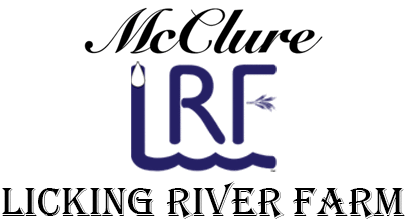Organic Vs Non-GMO
Many farmers say they use non-GMO feed but do not care if it is certified organic. All certified organic feed is non-GMO and has a verification process to ensure no use of pesticides or synthetic fertilizers. If you like to use non-GMO consider whether your feed uses corn or soybeans. The majority of corn and soy crops in the USA are GMO modified, so the GMO standards consider them high-risk non-GMO grains.
Regenerative
The livestock standards do not necessarily avoid the big agri-food inc factory production. Somebody can still raise poultry in large poultry houses, for example. Housing must provide adequate ventilation, an adequate supply of clean water, and proper sanitation. It also must provide access to the outdoors, shade, shelter, exercise areas, fresh air, and direct sunlight year-round. Housing must also provide adequate protection from predators. This can often mean the birds have access to the outside should they choose to go out. The Chickens are in a permanent building, and the outdoor space given access to needs to be fresh pasture. You often see the terms Organic or Free Range used on grocery store labels. The standards for these may not be exactly what your perception of the claim is.
Regenerative local small farmers most often will market their chickens for example as Pastured poultry. The feed could be non-GMO or Corn and soy-free organic feed even though the farm may not be certified. The term regenerative means the farmer is trying to work with nature not against it. Chickens put much natural fertilizer on the ground if they are on pasture. Most will use mobile chicken tractors you move the chickens to fresh grass or pasture every day. They then get fresh grass, bugs, feed, water, and protection from predators.
Certification Process
 The process of becoming organic certified is daunting and you must keep good records. Land used for pasturing and housing livestock, feed, and bedding crops must qualify for organic certification. To meet USDA standards, the field or parcel from which harvested crops, must have had no prohibited substances applied to it for three years immediately preceding the crop harvest. Not only do you have to have your animals certified but the land must also be certified. McClure Licking River Farms is a certified organic farm but we also have an open-door policy. Anyone can visit our farm anytime and see how we care for our animals.
The process of becoming organic certified is daunting and you must keep good records. Land used for pasturing and housing livestock, feed, and bedding crops must qualify for organic certification. To meet USDA standards, the field or parcel from which harvested crops, must have had no prohibited substances applied to it for three years immediately preceding the crop harvest. Not only do you have to have your animals certified but the land must also be certified. McClure Licking River Farms is a certified organic farm but we also have an open-door policy. Anyone can visit our farm anytime and see how we care for our animals.
Organic Livestock
You can purchase chickens from a standard hatchery and have 3 days to arrive on your farm after hatching to maintain their standards. For livestock to be certified they must be born on your certified farm. A pregnant animal in the case of breeding stock must be on the farm and managed organically for the last 1/3 of her gestation period.
 When McClure Licking River Farms decided on the heritage breed of pigs Mangalista we purchased two pregnant sows, a boar, and a barrow. One of the sows purchased had a litter 3 weeks after arriving on the farm so this litter is not certified. One Female Gilt they plan to sell as breeding stock, and the four male barrows will be whole or half hogs. As custom butchered for the buyer half and whole hogs do not require the same USDA inspection as selling individual cuts of meat. Meat needs to be USDA inspected and processed at a facility that is also certified to meet organic standards. At McClure Licking River Farms they not only are certified organic but raise all livestock with regenerative methods.
When McClure Licking River Farms decided on the heritage breed of pigs Mangalista we purchased two pregnant sows, a boar, and a barrow. One of the sows purchased had a litter 3 weeks after arriving on the farm so this litter is not certified. One Female Gilt they plan to sell as breeding stock, and the four male barrows will be whole or half hogs. As custom butchered for the buyer half and whole hogs do not require the same USDA inspection as selling individual cuts of meat. Meat needs to be USDA inspected and processed at a facility that is also certified to meet organic standards. At McClure Licking River Farms they not only are certified organic but raise all livestock with regenerative methods.

